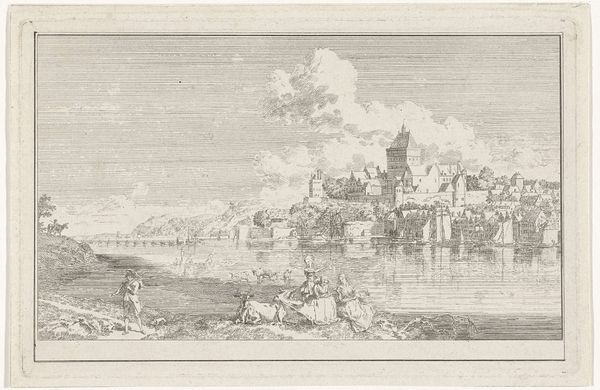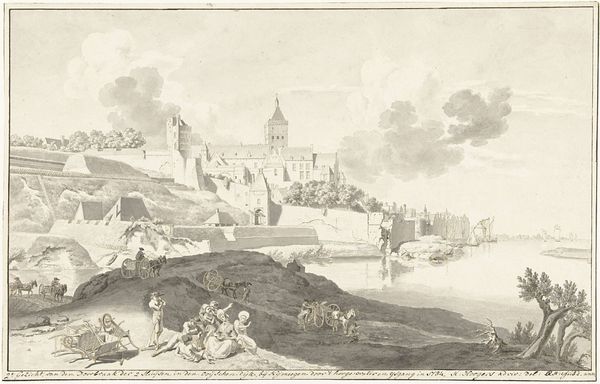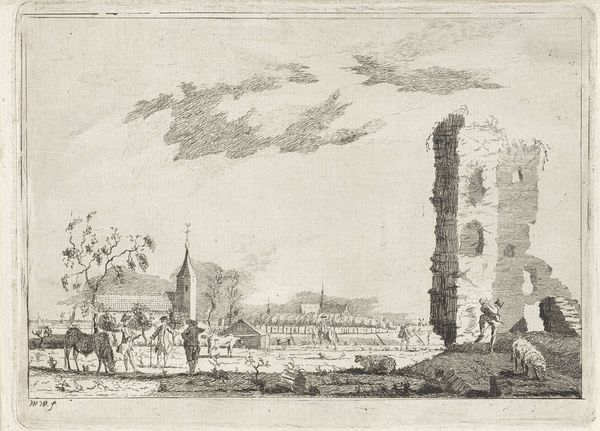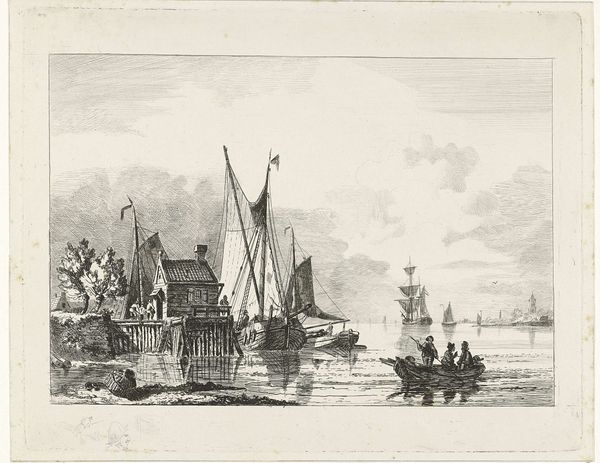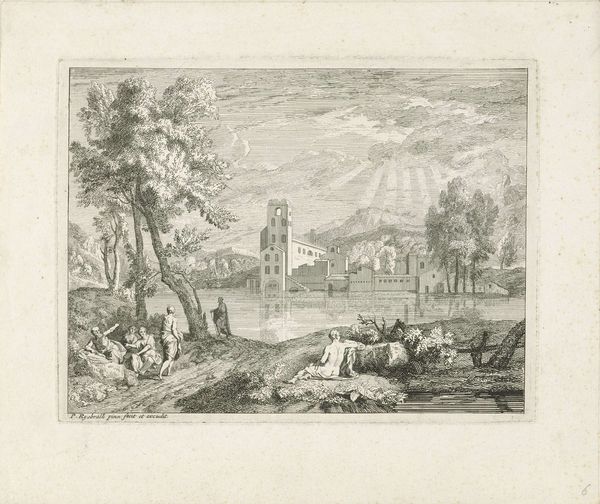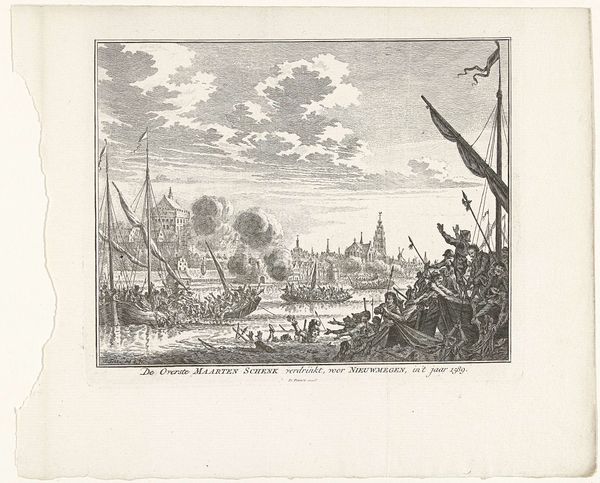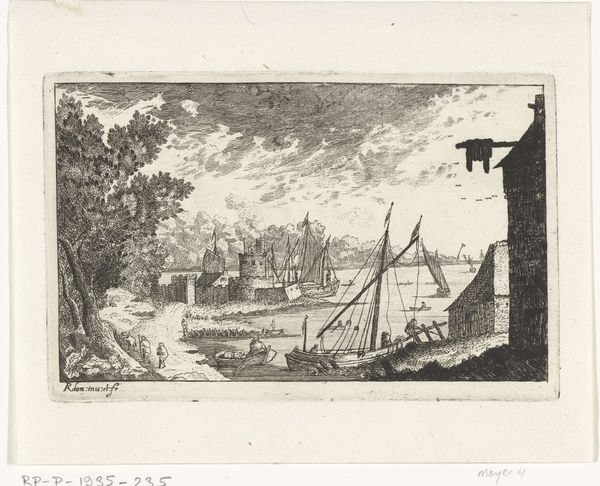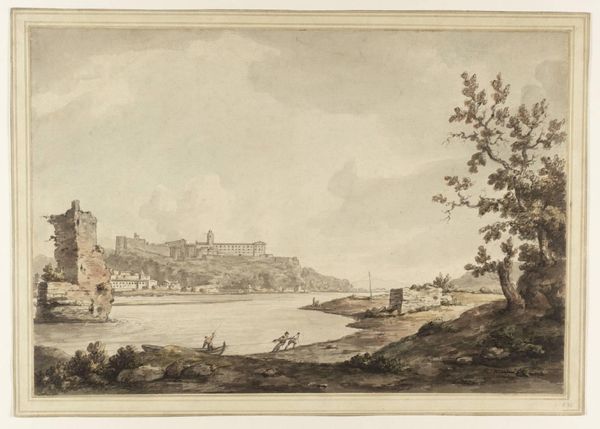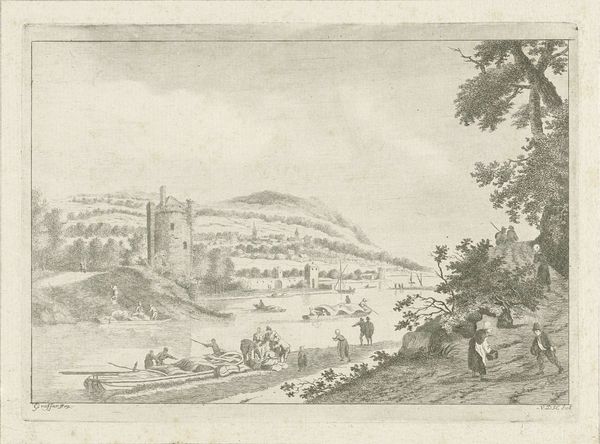
#
aged paper
#
toned paper
#
light pencil work
#
ink paper printed
#
old engraving style
#
etching
#
pen-ink sketch
#
watercolour illustration
#
natural palette
#
watercolor
Dimensions: height 124 mm, width 194 mm
Copyright: Rijks Museum: Open Domain
Curator: Looking at this print, the delicate line work gives it a sort of antique charm. Editor: It has a calm, idyllic quality, doesn't it? The muted tones evoke a sense of history, and there is a hazy effect that makes me feel very calm. Curator: We're looking at "View of the Valkhof at Nijmegen," an etching and watercolor made around 1788 by Hendrik Hoogers, currently held in the Rijksmuseum collection. Considering Hoogers' context, prints like these served a crucial purpose in disseminating visual information, documenting places and social conditions beyond the reach of most people. Editor: Yes, and consider the semiotics of the scene. The composition guides us from the common laborers in the foreground, resting with their cattle, to the architectural strength and wealth of the distant Valkhof and cityscape. How does Hoogers use the relationship of figures and buildings to imply societal divisions and economic dynamics? Curator: Precisely! The physical labor required to produce and distribute these images also played an interesting role in creating an image that romanticized daily life. Furthermore, the material properties of the etching, its ink, the paper all contribute to its significance. Editor: True. But let's not overlook the compositional strategies that give structure to this social landscape. The careful use of lines creating textures in the landscape contrast against smoother water reflections and suggest balance as well as social contrast. Also note how the clouds draw your eye to the city beyond. It invites contemplation. Curator: Considering it's watercolor on paper, it's fascinating to think about the relative affordability of printmaking at the time. The commodification of art through printmaking certainly democratized visual culture in some respects, and its production was another form of labor for some. Editor: Absolutely. Considering these detailed aesthetic choices allows for deeper contextual understanding, and reminds us of our position within an ongoing viewing experience that has its own socio-political landscape. Curator: Understanding this layering of context is key in appreciating the value of art objects such as these in understanding ourselves and society as a whole. Editor: Yes, art and historical context enrich our understanding. Thank you!
Comments
No comments
Be the first to comment and join the conversation on the ultimate creative platform.
